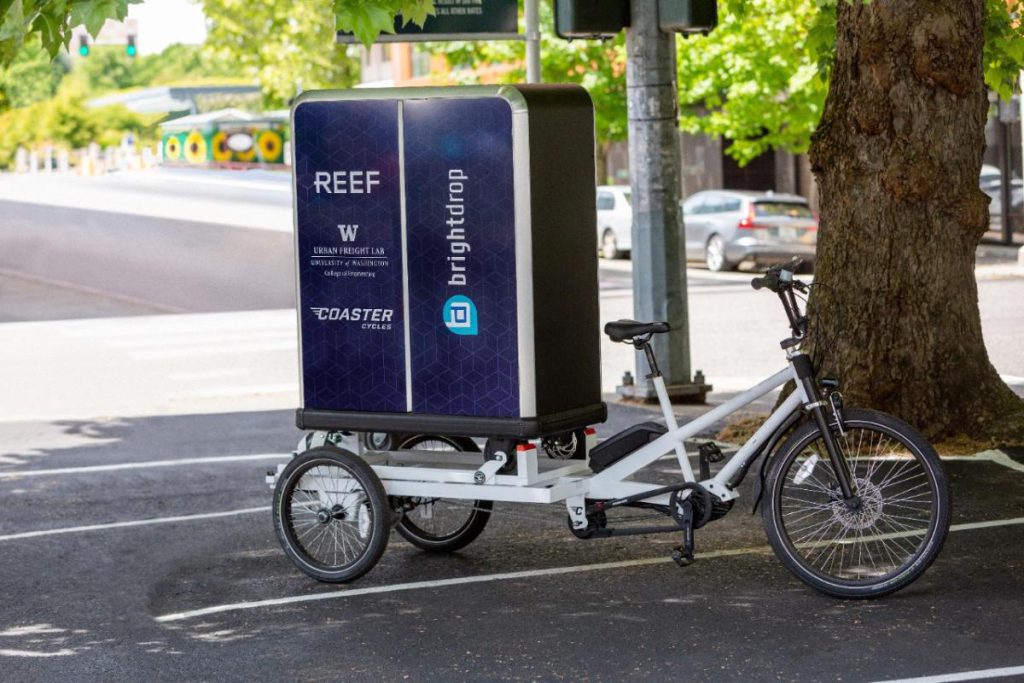
Parcels were delivered to the end customer via cargo bike as part of the Seattle Neighborhood Delivery Hub. The Hub ran for four months in 2021.
The Hub used customised electric-assist cargo bikes that could carry propulsion-assisted electric pallets. (We’ll cover route optimisation in a future issue.)
Parcels were received at the Hub, then either delivered to the parcel locker or prepared for to-door delivery by cargo bikes. “The truck that normally would have gone all the way to the home instead only went to the Hub, then all the packages were delivered by the cargo cycle,” explains Dr Anne Goodchild, Director of the Urban Freight Lab at the University of Washington.
“One of our Hub partners was the City of Seattle, and the City had questions about how a cargo bike uses the infrastructure where they ride, where they park, the impact on other vehicles, and the impact of traffic on the cargo bike.”
The Seattle Department of Transportation wants to achieve 30% zero-emission delivery citywide by 2030 and to better understand e-cargo bike delivery.
Seattle is a hilly city, which presents some challenges. The cargo bike delivered packages within a two-mile radius of the Hub.
The capacity and suitability of cargo bikes were tested during the operation of the Seattle Neighborhood Delivery Hub. “Delivery trucks are bigger than cargo bikes, so one thing for us to understand was in what numbers we would need to deploy cargo bikes to replace delivery trucks,” says Dr Goodchild.
Would dozens of cargo bikes be required to replace a delivery van? The results were surprising.
“We were able to replace one delivery truck mile with almost one cargo bike mile,” says Dr Goodchild.
Overall, there was a reduction in ICE vehicle mileage and emissions.
“We reduced the miles travelled per package by ICE vehicles by 50%. This figure takes into consideration the truck that carries packages to the Hub.”